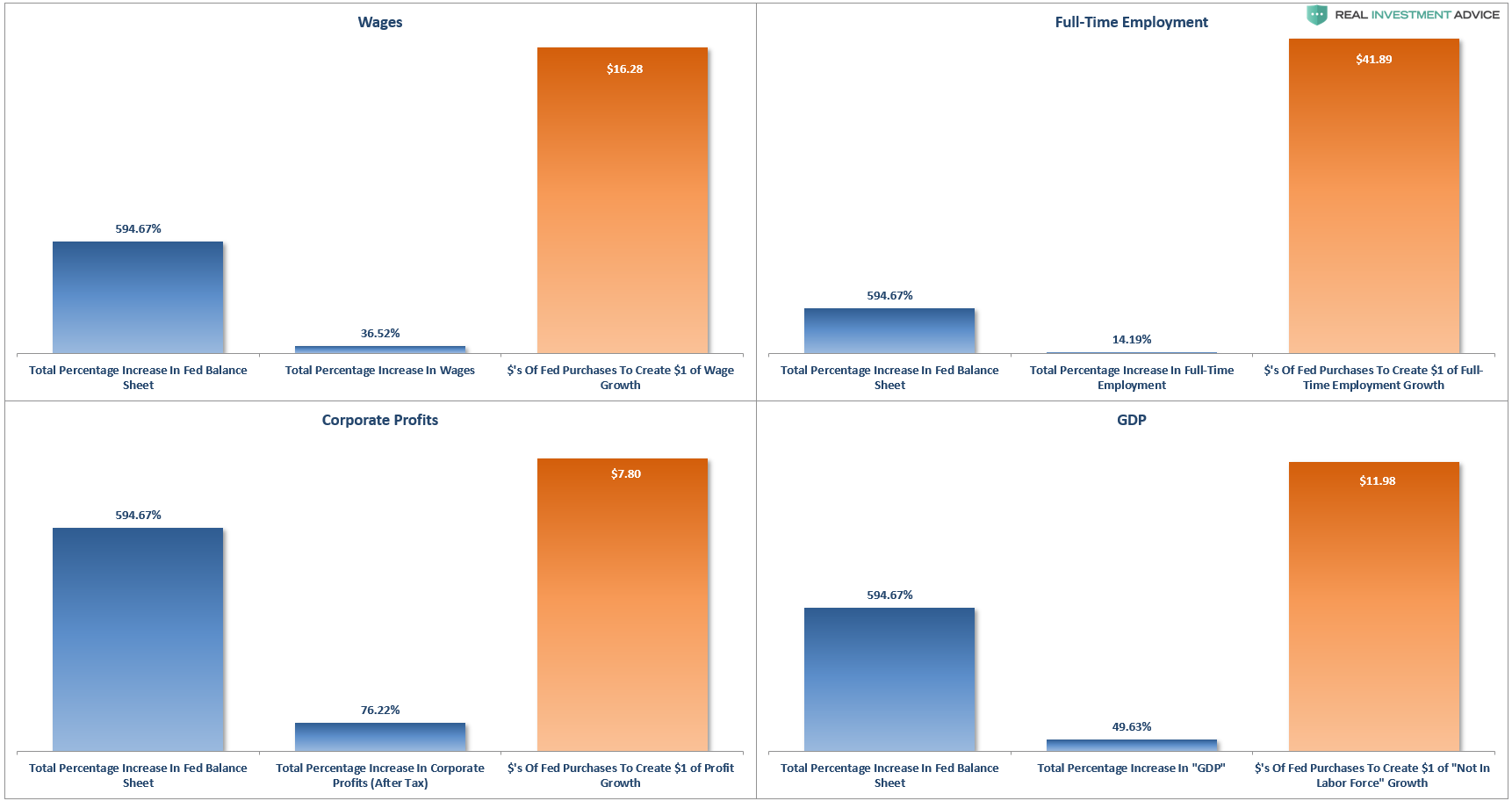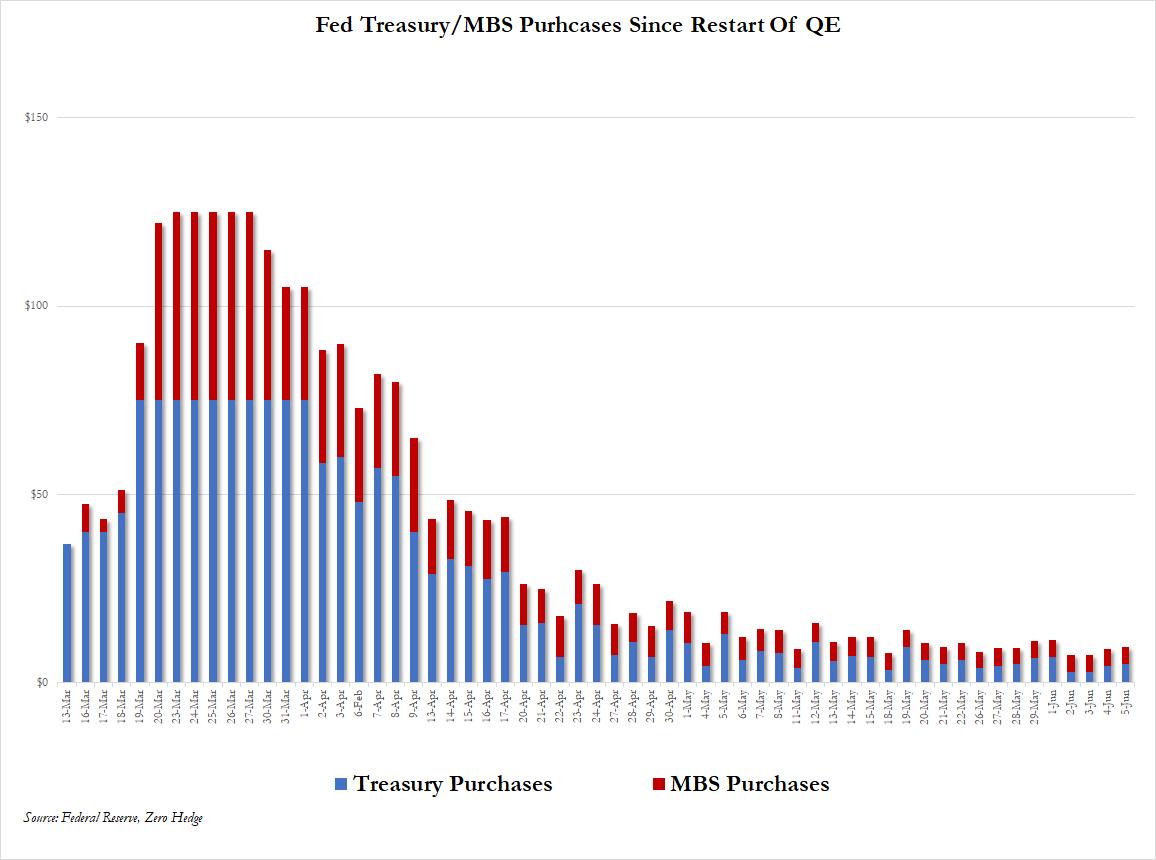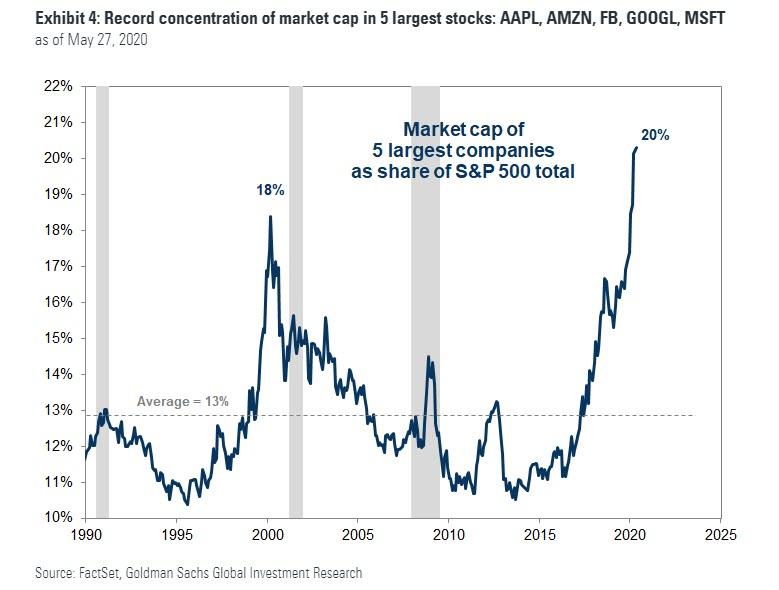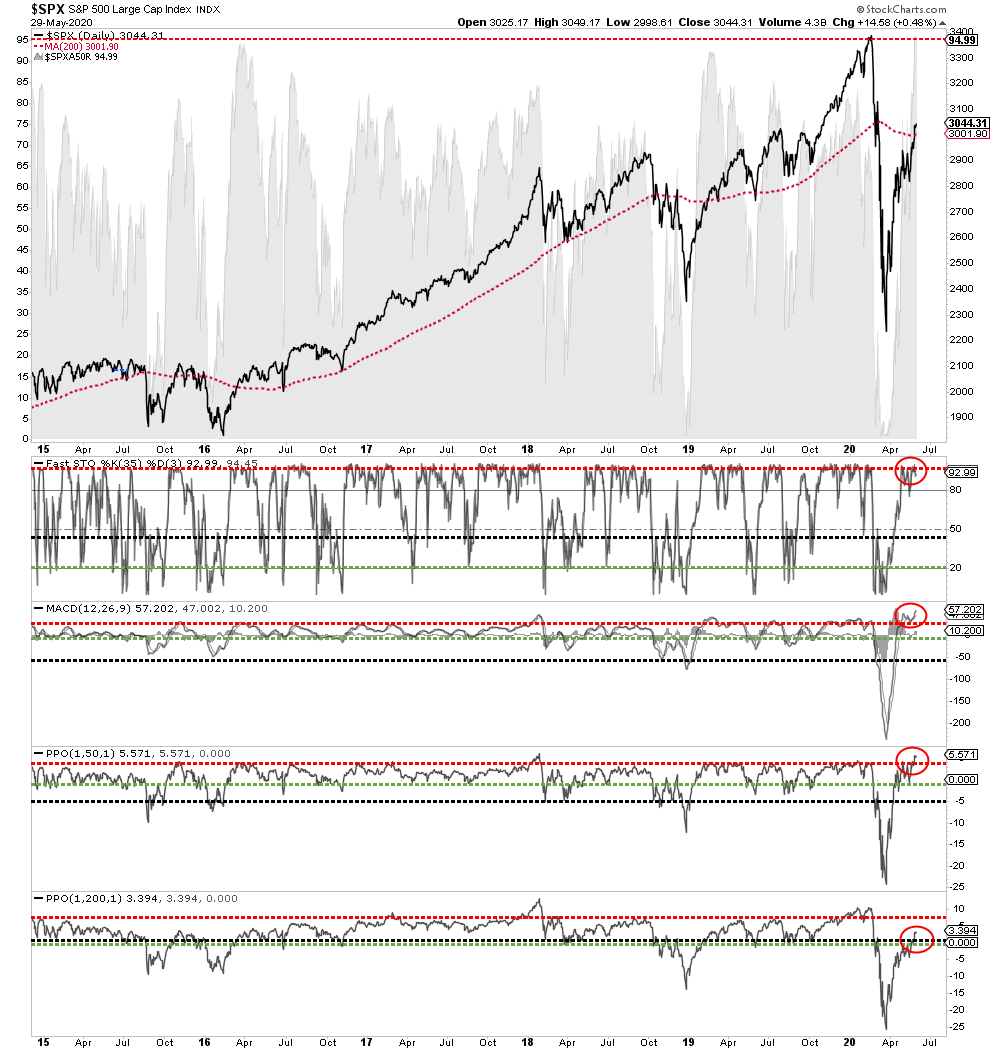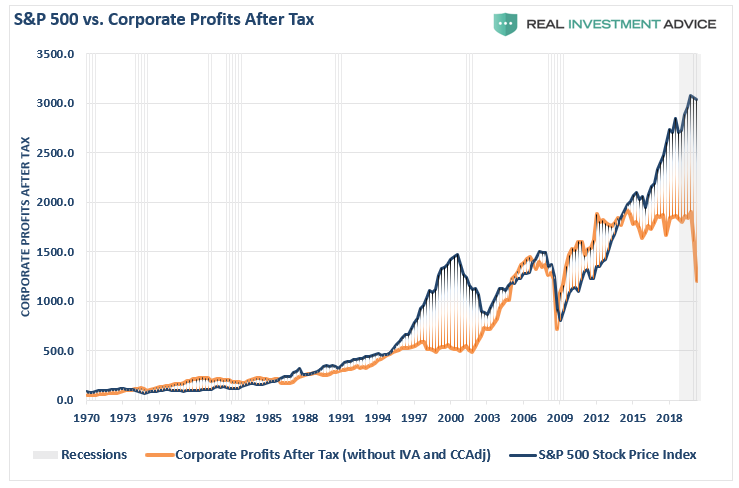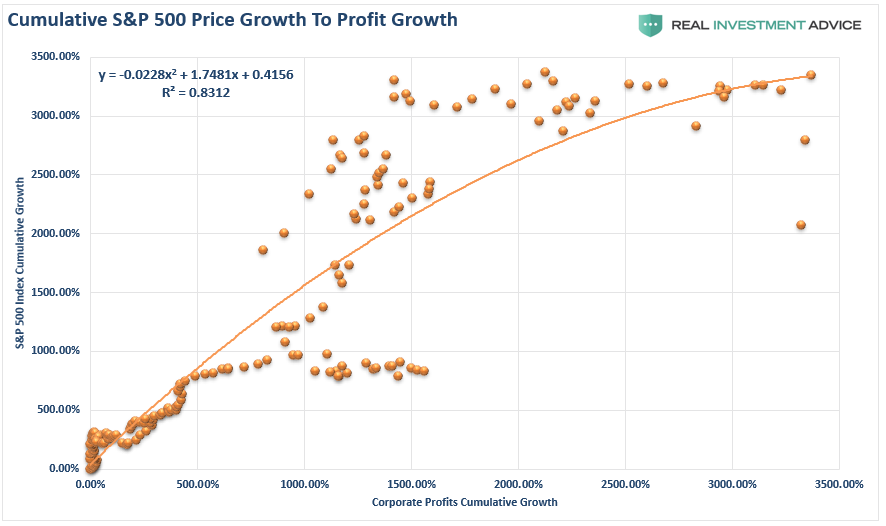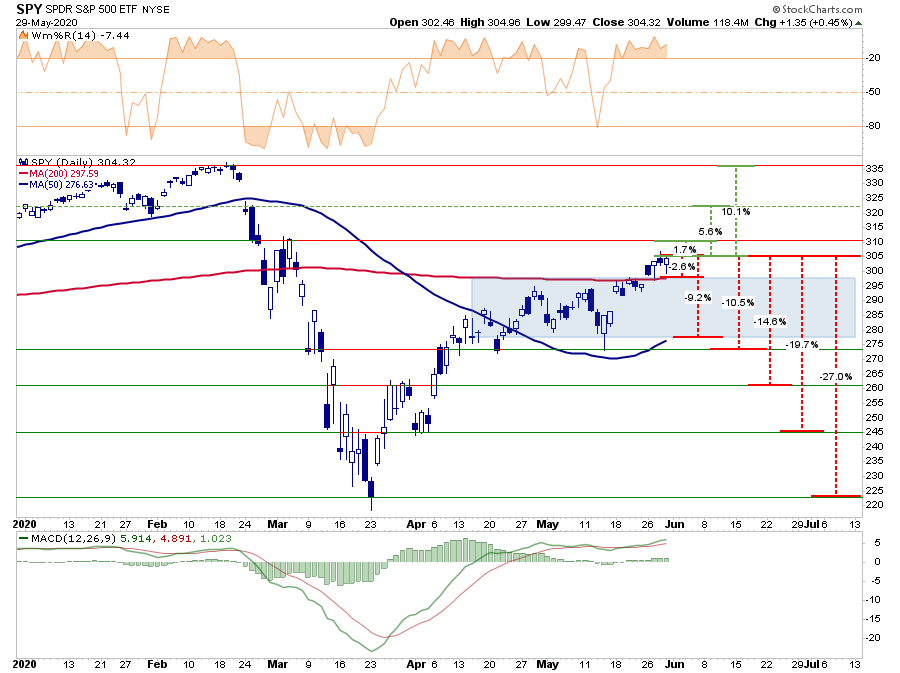by Lance Roberts, RIA
Too fast, too furious. That describes the April/May advance following the fastest 30% decline in history. The reason was not an improvement in fundamentals, but a generation of investors front running Fed liquidity flows.
Such should not be surprising as this is what was intended by the Federal Reserve from the outset. The Fed delved into “classical conditioning” to specifically obtain the outcome they wanted.
Classical conditioning (also known as Pavlovian or respondent conditioning) refers to the learning procedure where a potent stimulus (e.g., food) is paired with a previously neutral stimulus (e.g. a bell). Pavlov discovered that when introducing a neutral stimulus, the dogs would begin to salivate in anticipation of the potent stimulus, even though it was not currently present. This learning process results from the psychological “pairing” of the stimuli.
As noted in yesterday’s post, in 2010, then-Fed Chairman Ben Bernanke introduced the “neutral stimulus.” By adding a “third mandate” to the Fed’s responsibilities, the creation of the “wealth effect,” the neutral stimulus was achieved.
“This approach eased financial conditions in the past and, so far, looks to be effective again. Stock prices rose, and long-term interest rates fell when investors began to anticipate this additional action.”
– Ben Bernanke, Washington Post Op-Ed, November 2010.
Importantly, for conditioning to work, the “neutral stimulus,” when introduced, must be followed by the “potent stimulus,” to complete the “pairing.” For investors, the introduction of each round of “Quantitative Easing,“ the “neutral stimulus,” the rise of the stock market was the “potent stimulus.”
Fed Liquidity Didn’t Work As Intended
Given the massive interventions into markets by the Federal Reserve, as Bernanke noted, “investors anticipated the additional action” and jumped back into the stock market.
Ring the bell. Investors salivate with anticipation.
The Fed was successful in fostering a massive lift to equity prices and a corresponding lift in consumers’ confidence. Unfortunately, there was relatively little translation into wages, full-time employment, or corporate profits after tax, which ultimately triggered very little economic growth.
Given that asset prices should be a reflection of economic and revenue growth, the deviation is evidence of a more systemic problem.
It also suggests monetary policy may be much less effective in stimulating economic growth going forward. If such is the case, investors may be betting on a future outcome that fails to materialize.
For now, however, we are still in a bull market.
Still A Bull Market
Let’s review “Was March A Bear Market?”
“Such brings up an interesting question. After a decade-long bull market, which stretched prices to extremes above long-term trends, is the 20% measure still valid?
To answer that question, let’s clarify the premise.
- A bull market is when the price of the market is trending higher over a long-term period.
- A bear market is when the previous advance breaks, and prices begin to trend lower.
“This distinction is important.
- “Corrections” generally occur over very short time frames, do not break the prevailing trend in prices, and are quickly resolved by markets reversing to new highs.
- “Bear Markets” tend to be long-term affairs where prices grind sideways or lower over several months as valuations are reverted.
However, this was the most important point.
I have noted the market may be in the process of a topping pattern. The 2018 and 2020 peaks are currently forming the “left shoulder” and “head” of the topping process. Such would also suggest the “neckline” is the running bull trend from the 2009 lows.
A market peak without setting a new high that violates the bull trend line would define a “bear market.”
Fed Liquidity Is Slowing
On a technical basis, the market remains in a bull market. However, the supports of the bull market over the last decade, and the last 2-months, continue to erode.
While the Fed’s liquidity interventions did lure investors back into the market, those flows are quietly fading. As noted recently by Zerohedge:
“From an initial $75 billion per day when the Fed announced the launch of Unlimited QE in mid-March, the US central bank first reduced its daily buying to $60 billion per day, then announced a series of consecutive ‘tapers.’
After again shrinking the average daily POMO to $5 billion last week, in its latest just published schedule, the Fed unveiled that in the coming week it would purchase ‘only’ $4.5BN per day, or a total of $22.5BN for the week.”
Retail investors may not have caught onto this fact just yet.
However, given the depth of the current economic crisis, reversions in earnings, and the reality there will not be a “V-shaped” recovery, the risk of a market failure has risen.
Market Support Deterioration
Such is particularly the case as the market rally to date has been defined by the five largest stocks in the index. Via Goldman Sachs:
“Broader participation in the rally will be needed for the aggregate S&P 500 index to climb meaningfully higher. The modest upside for the largest stocks means the remaining 495 constituents will need to rally to lift the aggregate index.”
Such also becomes problematic when corporations are issuing debt at a record pace to supplant liquidity needs to offset the economic crisis rather than repurchasing shares. It’s worth remembering that over the last decade, buybacks have accounted for almost 100% of net stock buying.
Overbought & Extended
Besides the supportive underpinnings, the technical backdrop is also conducive for corrective action in the short-term. As discussed this past weekend:
“The number of stocks above the 50-dma is pushing record levels. Historically, whenever all of the overbought/sold indicators have aligned, along with the vast majority of stocks being above the 50-dma, corrections were close.”
Such doesn’t mean a “bear market” is about to start. It does suggest, at a minimum, a correction back to support is likely.
Overly Optimistic
Lastly, investors remain overly optimistic that corporate earnings and profits, will catch up with elevated asset prices. Historically, such has never been the case, and prices have ultimately “caught down” to fundamental realities.
There is more than a casual relationship between the cumulative growth of the financial market to corporate profits. While deviations can last for a while, eventually, those gaps are filled.
As my colleague Victor Adair at Polar Trading:
“The growing divergence between the ‘stock market’ and the economy the past couple of months might be a warning flag that Mr. Market is too exuberant. The Presidential election is just over 5-months away with polls showing that Biden may be the next President. The U.S./China tensions have been escalating, and the virus’s first wave continues to spread around the globe. However, the ‘stock market’ continues to be pulled higher by a handful of ‘Megacaps.’ The late Friday rally after Trump’s ‘punish China’ speech shows ‘animal spirits’ are alive and well!”
I agree, and while such may be the case for the moment, markets like this have a nasty habit of delivering unpleasant surprises.
Why We Hedge
This is why we hedge.
Currently, our portfolios are long-biased, meaning we have more equity-risk in our allocation than fixed income and cash.
Given the market’s advance, and the data points set out above, we only have three choices in how we manage our client portfolios currently:
- Do Nothing – if the markets correct, we lose some of our gains and have to wait for the portfolio to recover.
- Take Profits – as we have done with extremely overvalued assets in the past. We can take profits, raise cash, and reduce our equity exposure in advance of a correction. Such actions mitigate the damage of the decline. We will have to repurchase positions, or add new ones, to resize the portfolio in the future.
- Hedge – adding a position to the portfolio that is the “inverse” of the market. (the position goes up in value as the market declines.) This action allows us to keep our existing positions intact, and by “shorting against the portfolio,” allows us to effectively reduce our equity risk (and related capital destruction) during a market correction.
Which Do We Choose
Option 1 – is never really a good option. Riding the market up and down, and spending time “getting back to even,” doesn’t make much sense.
Option 2 – is something that we took advantage of twice this year already. We took profits at the peak of the market in January and February before both the decline. We also added new exposures in April as the market recovered. So, taking profits again in some positions would lead to a gross underweighting in certain portfolio allocation areas.
Option 3 is the most optimal at this stage of the rally.
With the Fed engaged in pumping liquidity into the markets, the most opportunistic method to hedge risk is “short the market” against our long positions. As noted this weekend, the risk/reward ranges are apparent at this point.
- -2.8% to the 200-dma vs. +1.7% to the March peak. Negative
- -9.2% to the 50-dma vs. 5.6% to February gap down. Negative
- -10.5% to the consolidation support vs. +10.1% to all-time highs. Neutral
- -19.7% to April 1st lows vs. +10.1% to all-time highs. Negative
- -27% to March 23rd lows vs. +10.1% to all-time highs. Negative
When we discuss hedging against risk, invariably readers mistakenly think we have sold the entirety of our portfolio and are betting on a “market crash.”
Never is this the case.
By taking prudent actions in the portfolio management process, we can reduce capital risk, and potentially add some incremental “alpha” to portfolios if a correction occurs.
That is how we manage risk.
You have a choice to either manage risk or ignore it.
The only problem is that ignoring risk has a long history of not working out very well.
Copyright © RIA






